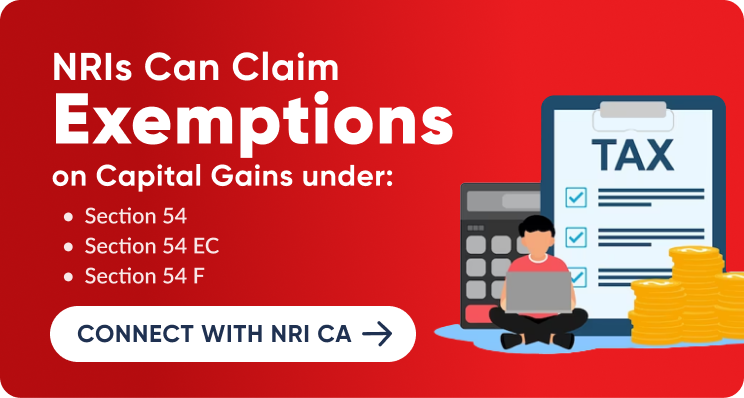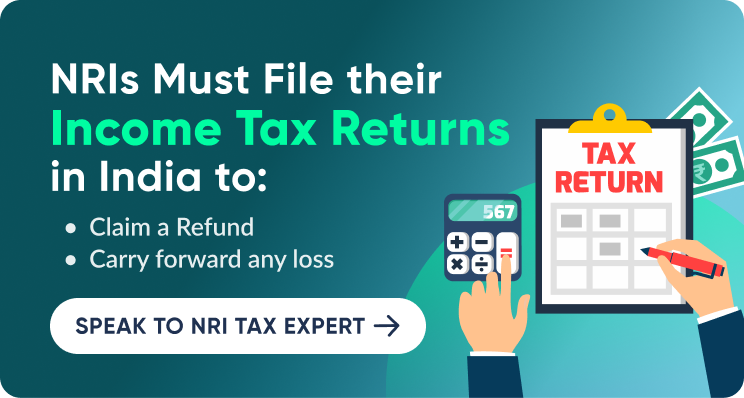Under Section 54EC of the Income Tax Act, 1961, individuals can reduce their tax liability by claiming exemption on their long-term capital gains made from property sale. To claim exemptions, you need to invest your long-term capital gains in capital gains bonds issued by certain government backed infrastructure companies, like REC, NHAI, PFC, IRFC, etc.
Let’s understand Section 54EC in detail and how it can help you minimize your tax liability.

What is Section 54EC of Income Tax Act?
Section 54EC of the Income Tax Act, 1961 provides for capital gains tax exemption on the transfer of a long-term capital asset, such as land or building or both, if the proceeds from the transfer are invested in specified bonds within six months of sale of the asset.
Schedule a call with an investment expert to get complete help regarding investment in 54EC Bonds in India.
Under this section, if an individual or a Hindu Undivided Family (HUF) transfers a long-term capital asset and invests the proceeds in eligible bonds within six months from the date of transfer, they can claim exemption from capital gains tax. You can invest up to a maximum of Rs. 50 lakhs in a financial year. The eligible bonds are those issued by the National Highways Authority of India (NHAI), the Rural Electrification Corporation (REC), Power Finance Corporation (PFC), and Indian Railway Finance Corporation (IRFC).
The exemption under Section 54EC is available only if the capital asset is held for more than two years before its transfer, and the bonds are held for a minimum of five years from the date of acquisition. If the bonds are redeemed before the completion of five years, the exemption will be withdrawn, and the capital gains will become taxable in the year of redemption.
It is important to note that the benefit of exemption under Section 54EC can be claimed only once for a particular transfer of a long-term capital asset.

Eligibility Criteria for Tax Exemption Benefits Under Section 54EC
The following are the eligibility criteria for claiming the benefit of exemption under Section 54EC of the Income Tax Act:
- The exemption is available to individuals and Hindu Undivided Families (HUFs) who have sold a long-term capital asset.
- The capital asset must have been held for more than two years before its transfer.
- The exemption is available only if the proceeds from the sale of the long-term capital asset are invested in eligible bonds issued by the National Highways Authority of India (NHAI), the Rural Electrification Corporation (REC), etc.
- The investment in eligible bonds must be made within six months from the date of transfer of the capital asset.
- The investment in eligible bonds must be made out of the capital gains earned from the transfer of the long-term capital asset.
- The maximum investment amount that you can claim exemption on is Rs. 50 lakhs in a financial year.
- The bonds must be held for a minimum of five years.
- Additional conditions
- Two individuals can jointly buy a capital gains bond under Section 54EC of the Income Tax Act. In such cases, the investment in the bond can be made by both individuals in their joint names, and the capital gains exemption can be claimed by both individuals in proportion to their investment in the bond
For example, if two individuals jointly invest Rs. 1 crore in a capital gains bond under Section 54EC, each individual can claim a capital gains tax exemption on an investment up to Rs. 50 lakhs.
How to Invest in Bonds Under Section 54EC?
These long-term bonds can be held in both a demat account or physical form. While the process may slightly vary depending on the methods of investment you choose, common steps you need to follow are given below:
- Complete the KYC process: To invest in these bonds, you will have to complete the Know Your Customer (KYC) process with the issuer. This will involve submitting your identity proof, address proof, and other relevant documents.
- Make the payment: Once your KYC is completed, you can make the payment for the bond. You can make the payment through cheque, demand draft, or electronic transfer from the branch of the specified bank, as per the instructions of the issuer.
- Get the bond certificate: Once your payment is processed, you will receive the bond certificate from the issuer. Ensure that you keep the certificate safely, as you will need it as proof of your investment for claiming tax benefits.

How to Calculate Exemption on Capital Gains Bonds
You can easily calculate the income tax exemption u/s 54EC of the IT Act available through investment in capital gains bonds. Here is an example to illustrate how to calculate exemption on 54EC bonds:
Suppose you bought a property for Rs. 60 lakh two years ago. Now you sell the same property in January 2023 for Rs. 1 crore and earn LTCG of Rs. 40 lakhs. You decide to invest the entire amount of LTCG in 54EC bonds in March 2023.
In this case the entire amount of LTCG i.e. Rs. 40 lakh is tax-free for the financial year 2022-23.
However, if you decide to invest only Rs. 20 lakh out of the LTCG amount within six months, only the amount that is invested in capital gains bonds is tax-free and the remaining Rs. 20 lakh will be taxable.
Wrapping it Up
When you sell your immovable property for profit, you can invest that profit in capital gains bonds to reduce the tax burden under Section 54EC of the Income Tax Act.
NRI Investment in Bonds is a very popular and rewarding opportunity. In addition, capital bonds offer dual benefit of wealth creation and tax saving. If you have any doubts or queries and want specialized advice from experts at SBNRI, contact us using the button below. Also visit our blog and YouTube Channel for more details.
GREAT NEWS! Now connect with our expert directly on WhatsApp using the button below.



